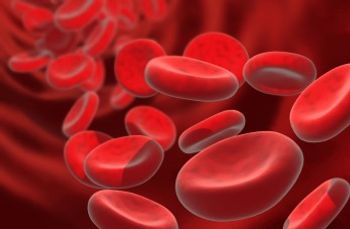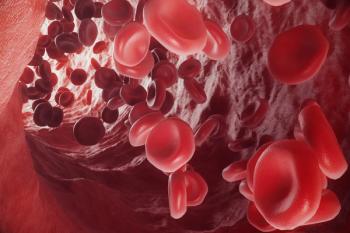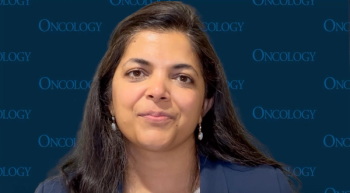
Notable Economic Burden Associated With Early Discontinuation of Hypomethylating Agents in High-Risk MDS

Early discontinuation of a hypomethylating agent was associated with an increase in economic burden for those with refractory anemia with excess blasts, a diagnosis that overlaps with high-risk myelodysplastic syndrome.
Investigators identified an association between early discontinuation of hypomethylating agents (HMAs) and an increase in the economic burden in patients with refractory anemia and excess blasts, a diagnosis that overlaps with high-risk myelodysplastic syndromes, according to a study published in Clinical Lymphoma, Myeloma & Leukemia.
Patients in the HMA-nonpersistent group had significantly higher per patient per month costs (PPPM) at $18,039 compared with those in the HMA-persistent group at $13,893, especially for hospitalization ($3375 vs $2131) and emergency room visits ($5517 vs $2867).
“The study results point to a significant proportion of patients discontinuing HMA therapy before the clinically recommended duration to elicit a response to treatment. Further, we quantify the direct medical costs associated with premature discontinuation of HMAs or treatment nonpersistence, as indicated by higher resource use and costs in the HMA-nonpersistence group compared to the HMA-persistent group in patients who completed 4 or more cycles of therapy,” investigators of the study wrote.
A total of 664 patients with high-risk MDS who initiated treatment with HMA enrolled on the study.Of these patients, 55.6% were persistent and 44.4% were nonpersistent with HMA. The median overall follow-up was 12.3 months. Moreover, the median follow-up in the HMA-nonpersistent group was 13.3 months and 9.5 months for nonpersistent group. Those in the nonpersistent group were older at diagnosis, and less were married and had initiated therapy with azacitidine compared with decitabine vs the HMA-persistent group.
Investigators also identified significantly high PPM resource use of patients in the HMA-nonpersistent arm for hospitalizations, emergency room visits, and receipt of care vs the HMA-persistent arm. Conversely, for those in the HMA-persistent group, the rates of outpatient and physician visits were higher than the HMA-nonpersistent group.
Additionally, the weighted costs analysis showed that the HMA-nonpersistent group had higher mean costs for hospitalization (0.107; 95% CI, 0.087-0.132 vs 0.069; 95% CI, 0.058-0.082), emergency room visits (0.383; 95% CI, 0.342-0.428 vs 0.290; 95% CI, 0.265-0.317), durable medical equipment use (0.342; 95% CI, 0.275-0.424 vs 0.263; 95% CI, 0.220-0.315), and hospice care (0.165; 95% CI, 0.135-0.201 vs 0.065; 95% CI, 0.055-0.077) compared with the HMA-persistent group. Costs between each group was similar for outpatient and physician services, and home health visits.
The sensitivity analysis assessed patients who were alive for 4 months or longer following an MDS diagnosis. This showed that patients who were HMA nonpersistent had higher rates of emergency room visits, hospitalizations, home health, hospice care, and skilled nursing facility utilization. The total healthcare costs remained similar between groups, although outpatient costs were higher for those who were HMA-persistent. Additionally, the costs for the skilled nursing facility, emergency room, and hospice remained significantly higher for those who were HMA-nonpersistent vs those who were HMA-persistent.
Reference
Joshi N, Kale H, Corman S, Wert T, Hill K, Zeidan AM. Direct medical costs associated with treatment nonpersistence in patients with higher-risk myelodysplastic syndromes receiving hypomethylating agents: a large retrospective cohort analysis. Clin Lymphoma Myeloma Leuk. 2021;21(3):e248-e254. doi:10.1016/j.clml.2020.12.002
Newsletter
Stay up to date on recent advances in the multidisciplinary approach to cancer.


















































































